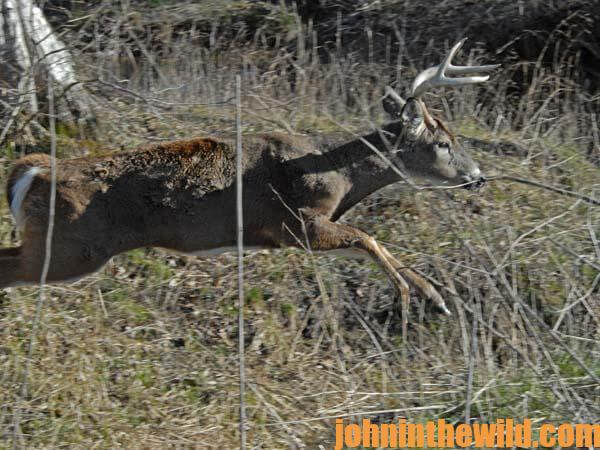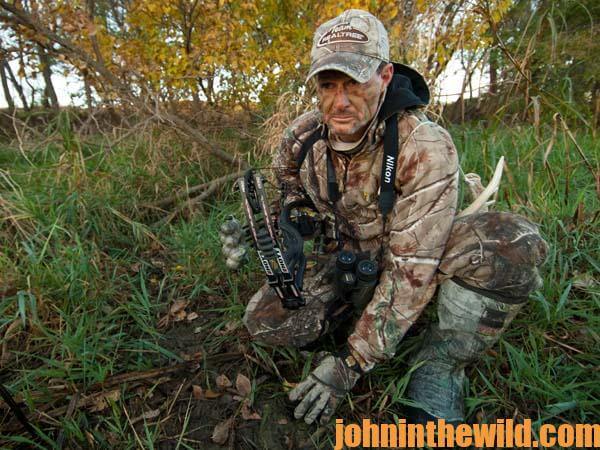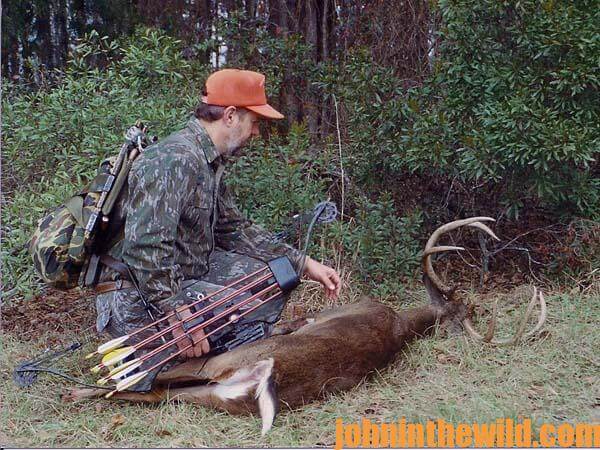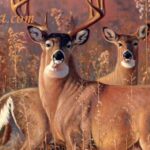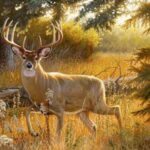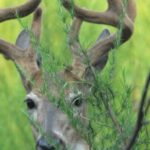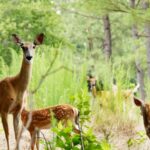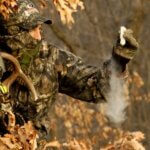John’s Note: Two ways of bagging a buck include luck, which is a factor that a majority of hunters in many areas depend on solely, and experience – knowing the deer, his movement patterns, his behavior patterns and what causes him to move from one place to another. Being able to predict deer movement is an important trait of the hunter who bags a buck year after year. Very-little guesswork is involved in this type of hunting. The sportsman takes a set of given facts, studies the terrain, the available food, the deer’s mating habits and the weather in his region, correlates them with deer sign he finds where he’s hunting and comes-up with a hunt plan that logically will put him in a position to see and hopefully bag a deer on any given day he hunts.
After the deer have felt hunting pressure, their movement patterns change, which often will occur after the second week of bow season, if there’s considerable pressure on the animals from other hunters.
Due to these hunter encounters during daylight hours, deer will begin to feed after dark and stay away from the food source until night. Therefore tree stands and ground blinds will have to be moved from the food source to another place, if you want to consistently bag deer. However, to know where to move your tree stand to, additional scouting is required.
“One of the signs that indicates a hunter should begin to scout for a new place to put his tree stand is when he sees deer entering the field from several different directions, instead of coming out next to his stand,” Dr. Robert Sheppard, a longtime bowhunter, comments. “He or she may find that when he moves his stand to set-up an ambush, the deer still won’t consistently come out in the same place every day. He also may notice that he doesn’t see as many deer come into the field during daylight hours, but after a rain he observes just as many tracks in the field as he has at the first of the season. To put your stand in a more-productive area, the most-effective technique is to back that stand up to a point in the woods that the deer are coming to prior to entering the field after dark. To locate this area, I scout on the days when the weather conditions or wind conditions aren’t right for hunting. Common sense is your best tool for finding that staging area after the deer have quit showing-up in the field. The most-reliable signs for locating deer are finding places in the woods where the deer’s feet have hit the ground regularly. You can learn this information by scouting intensively and using your trail cameras. You can go to the trail that you’ve been hunting effectively during the early season and follow the trail away from the field into the woods. I’ve gotten down on my hands and knees before to track deer further back into the woods away from a primary food source 2 to 3 weeks after bow season has begun. By using this tracking method, you may not understand the total deer-movement patterns. However you’ll have a better picture of what the deer are doing, and where you should place your tree stand, than you’ll have by sitting on the edge of the field, waiting for the deer to show-up.
You may backtrack one deer 100 yards and find an area where two or three trails cross. Or, you may continue to follow a trail and locate the edge of a slough where there may be 40 deer walking down that slough edge regularly. So, by following one deer trail away from the food source, more than likely you’ll locate an area where many of the deer that are using that field as a food source will concentrate prior to entering their feeding ground. Once you discover a place like this, you’ll see many tracks going in both directions. Set-up your stand here for the next week or two of bow season or for the first day or two of gun season.
“But instead of relying totally on one of these staging regions away from the field, the consistent hunter will follow four or five trails out of the field going in different directions to other staging areas. In each of these staging areas, he’ll locate a tree for his tree stand. If he’s a bowhunter, he’ll cut shooting lanes in four directions from the tree where he plans to place his stand. With his compass and GPS, he’ll determine what direction his tree stand will be facing to learn which way the wind must be blowing from to be able to hunt out of that stand. By that, I mean, if his tree stand faces to the north, then the best time for him to hunt out of that stand, so that his scent won’t be carried into his hunting area, will be when there’s a prevailing north, northwest or northeast wind. Using this system of patterning deer, the hunter needs at least one tree stand he can hunt in the deer’s staging area – no matter what the wind condition is. After the sportsman has taken his deer from one of these regions or has shot at and missed a deer in these staging areas, the deer begin to learn that they’re in danger when they enter this staging zone. They’ll start showing-up in fewer numbers and finally not at all during the daylight hours. The deer will wait later in the evening to enter the field or come out earlier in the morning. Deer hunting becomes harder. You’ll begin to back track the deer even further from the staging area, and the trailing gets harder, because there are more leaves on the ground and following the deer tail becomes more difficult.”
To learn more about deer hunting, you can get John E. Phillips’ Kindle eBooks, “How to Hunt and Take Big Buck Deer on Small Properties,” (John’s latest book), “How to Hunt Deer Up Close: With Bows, Rifles, Muzzleloaders and Crossbows,” “PhD Whitetails: How to Hunt and Take the Smartest Deer on Any Property,” “How to Take Monster Bucks,” and “How to Hunt Deer Like a Pro,” or to prepare venison, get “Deer & Fixings.” Click here to get these books.
About the Author
John Phillips, winner of the 2012 Homer Circle Fishing Award for outstanding fishing writer by the American Sportfishing Association (ASA) and the Professional Outdoor Media Association (POMA), the 2008 Crossbow Communicator of the year and the 2007 Legendary Communicator chosen for induction into the National Fresh Water Hall of Fame, is a freelance writer (over 6,000 magazine articles for about 100 magazines and several thousand newspaper columns published), magazine editor, photographer for print media as well as industry catalogues (over 25,000 photos published), lecturer, outdoor consultant, marketing consultant, book author and daily internet content provider with an overview of the outdoors. Click here for more information and a list of all the books available from John E. Phillips.
Next: How Dr. Robert Sheppard Scouts and Hunts Deer at the End of the Season



